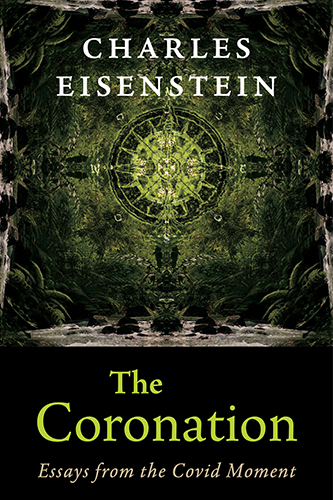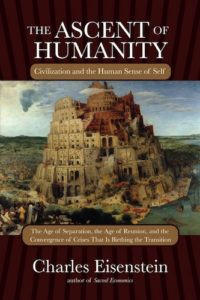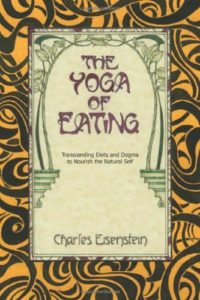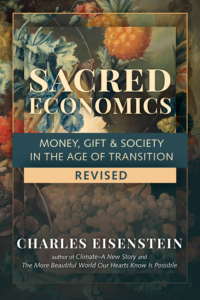Climate — A New Story
Chapters
Chapter 2: Beyond Climate Fundamentalism
The Rush to a Cause
“That estuary used to be full of kelp and eels when we were kids,” said Stella. “It was full of all kinds of wildlife. Crabs, clams, horseshoe crabs—there was a mussel bed right over there—one time I was swimming in that bend and came face to face with an eel.”
That is what my wife told me on a visit to the estuary where the Narrow River meets the Narragansett Bay in Rhode Island, one of her haunts when she was growing up. It is a picturesque spot, surrounded by trees and sandy beaches, and I wouldn’t have known that it is a seriously degraded ecosystem if Stella hadn’t told me what it was like when she was a child.
Neither of us knows the reason why the eels disappeared. We shared a moment of sadness, and then Stella recalled another memory that somehow seemed to explain it. She and her friend Beverly would sometimes visit that part of the beach on what they called “rescue missions.” Groups of marauding boys would come and flip over all the horseshoe crabs that had crawled onto the sand, leaving them to die there helplessly. Stella and Beverly would flip them rightside-up again. “Whoever was doing it had no reason to whatsoever,” she said. “It was senseless killing.”
This is the kind of story that makes me feel like I’ve detoured onto the wrong planet.
We didn’t see any horseshoe crabs on this visit. They are a rare sight here now. I don’t know if that is because people killed too many of them, or because we are “harvesting” too much of their blood for hemocyanin. Or maybe it is because of the general deterioration of the ecosystem, or pesticide runoff, agricultural runoff, land development, pharmaceutical residues, changing patterns of rainfall caused by development or climate change.… Maybe the horseshoe crabs are sensitive to one of these, or maybe the creatures they eat are, or it could be that the sensitive one is a mollusk that serves a role in the reproductive cycle of a microorganism that keeps another microorganism in check that infects the horseshoe crab.
I feel quite sure that whatever the scientific explanation for the die-off of the horseshoe crabs and eels, the real reason is the senseless killing Stella described. I mean not so much the killing part, but the senseless part—the paralysis of our sensing function and the atrophy of our empathy. We feel not what we do.
The crabs and kelp and eels are all gone. The mind searches for the cause—to understand, to blame, and then to fix—but in a complex nonlinear system, it is often impossible to isolate causes.
This quality of complex systems collides with our culture’s general approach to problem-solving, which is first to identify the cause, the culprit, the germ, the pest, the bad guy, the disease, the wrong idea, or the bad personal quality, and second to dominate, defeat, or destroy that culprit. Problem: crime; solution: lock up the criminals. Problem: terrorist acts; solution: kill the terrorists. Problem: immigration; solution: keep out the immigrants. Problem: Lyme Disease; solution: identify the pathogen and find a way to kill it. Problem: racism; solution: shame the racists and illegalize racist acts. Problem: ignorance; solution: education. Problem: gun violence; solution: control guns. Problem: climate change; solution: reduce carbon emissions. Problem: obesity; solution: eat less and burn more calories.
You can see from the above examples how reductionistic thinking pervades the entire political spectrum, or certainly mainstream liberalism and conservatism. When no proximate cause is obvious, we tend to feel uncomfortable, often to the extent of finding some reasonable candidate for “the cause” and going to war against that. The recent spate of mass shootings in America is a case in point. Liberals blame guns and advocate gun control; conservatives blame Islam, immigrants, or Black Lives Matter and advocate crackdowns on those. And of course, both sides especially like to blame each other.
Superficially it is obvious that you can’t have mass shootings without guns, just as it is obvious that allowing civilian access to military assault weapons makes those shootings more deadly. However, to focus attention on gun availability bypasses more troubling questions that don’t admit easy solutions. Where does all that hatred and rage come from? What social conditions give rise to it? The furious debate about gun control so monopolizes U.S. political attention that these questions languish on the intellectual margins. If we do not address them, does taking away the guns really do much good? Someone could use a bomb, a truck, poison … is the solution then a complete lockdown of society, the imposing of ubiquitous and ever-increasing surveillance, security, and control? That is the solution we’ve been pursuing my whole lifetime, but I haven’t noticed people feeling any safer.
Perhaps what we are facing in the multiple crises converging upon us is a breakdown in our basic problem-solving strategy, which itself rests on the deeper narratives of the Story of Separation.
Learning of the die-off of the estuary, I myself felt the impulse to find the culprit, to find someone to hate and something to blame. I wish solving our problems were that easy! If we could identify one thing as the cause, the solution would be so much more accessible. But what is comfortable is not always true. What if the cause is a thousand interrelated things that implicate all of us and how we live? What if it is something so all-encompassing and so intertwined with life as we know it, that when we glimpse its enormity we know not what to do?
That moment of humble, powerless unknowing, where the sadness of an ongoing loss washes through us and we cannot escape into facile solutioneering, is a powerful and necessary moment. It has the power to reach into us deeply enough to wipe away frozen ways of seeing and ingrained patterns of response. It gives us fresh eyes, and it loosens the tentacles of fear that hold us in normality. The ready solution can be like a narcotic, diverting attention from the pain without healing the wound.
You may have noticed this narcotic effect, the quick escape into “Let’s do something about it.” Of course, in those instances where cause and effect is simple and we know exactly what to do, then the quick escape is the right one. If you have a splinter in your foot, remove the splinter. But most situations are more complicated than that, including the ecological crisis on this planet. In those cases, the habit of rushing to the most convenient, superficially obvious causal agent distracts us from a more meaningful response. It prevents us from looking underneath, and underneath, and underneath.
What is underneath the callous cruelty of those horseshoe crab flippers? What is underneath the massive use of lawn chemicals? What is underneath the huge suburban McMansions? The system of chemical agriculture? The overfishing of the coastal waters? We get to the foundational systems, stories, and psychologies of our civilization.
Am I saying never to take direct action because after all, the systemic roots are unfathomably deep? No. Where the unknowing, perplexity, and grief take us is to a place where we can act on multiple levels simultaneously because we see each dimension of cause within a bigger picture and we don’t jump to easy, false solutions.






